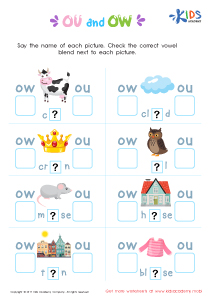Vocabulary expansion Normal Grade 2 Vowel Blends Worksheets
6 filtered results
-
From - To
Enhance your second grader's vocabulary with our engaging Vowel Blends Worksheets! Tailored for normal Grade 2 students, these worksheets facilitate exciting learning experiences while building essential vocabulary. Through fun activities, children will explore various vowel blends, enhancing their reading and phonics skills. Our user-friendly approach promotes active participation, encouraging kids to recognize and use new words naturally. Ideal for classroom or home use, these worksheets support diverse learning styles and help foster a love for language. Watch your child's confidence soar as they master vowel blends and expand their vocabulary effectively! Dive into our resource-packed worksheets for impactful learning today!
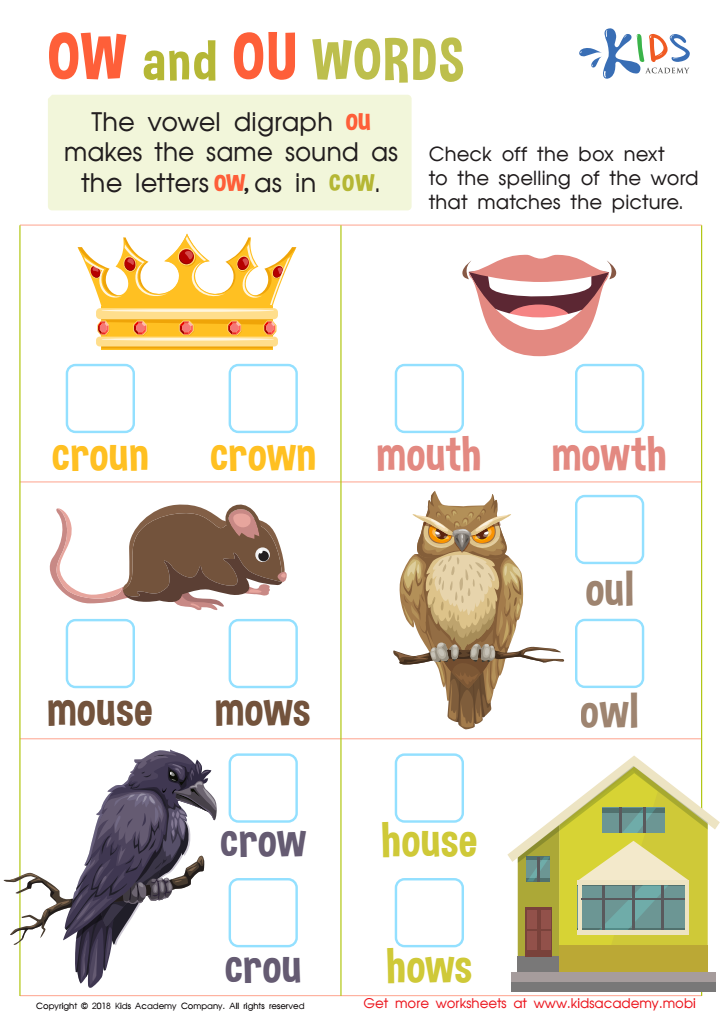

Reading: OW and OU Words Worksheet
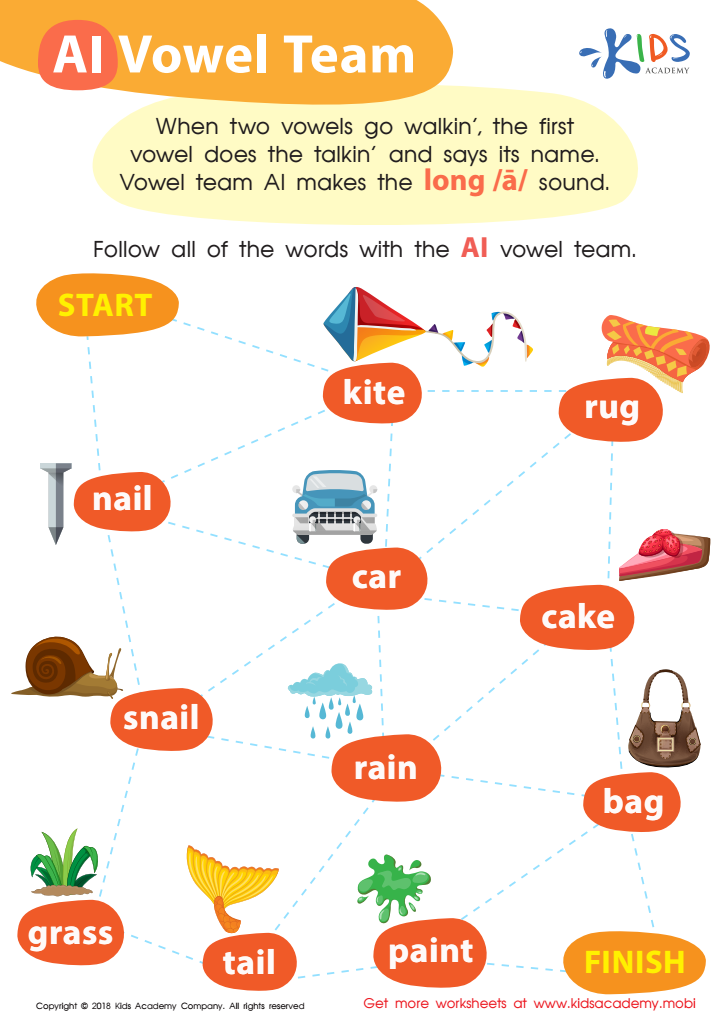

Reading: AI Vowel Team Worksheet
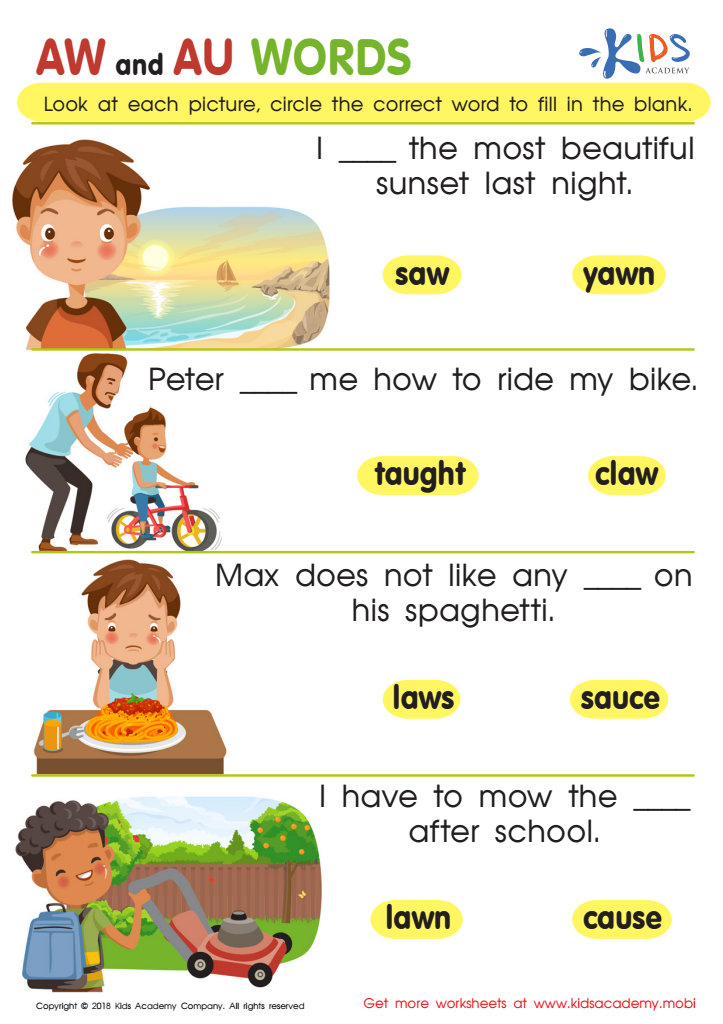

Reading: AW and AU Words Worksheet
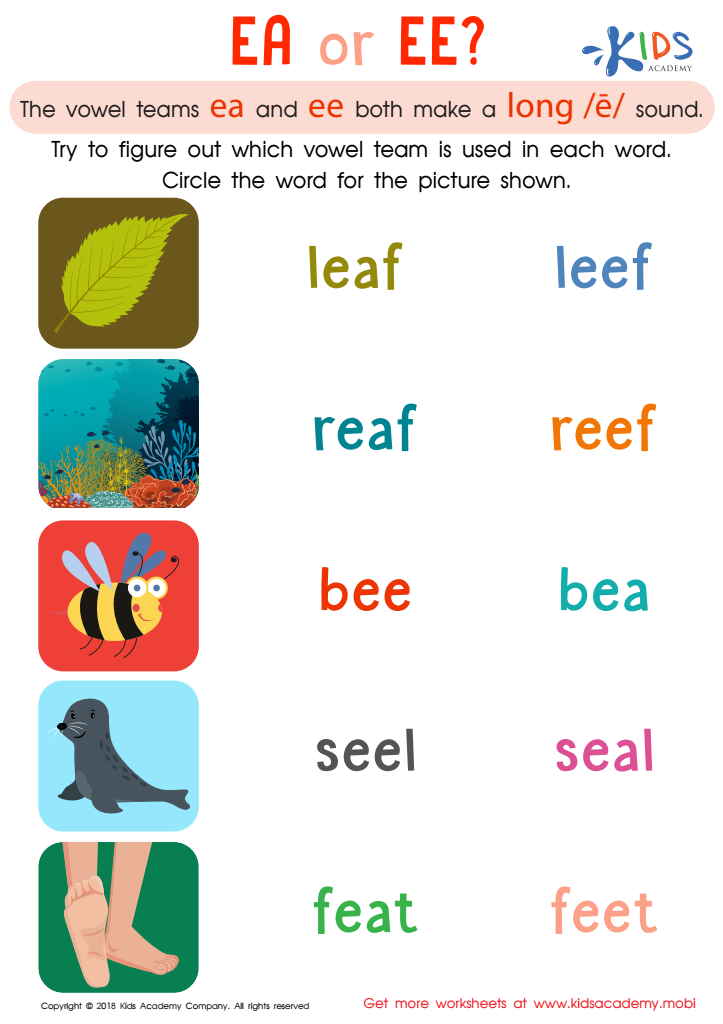

Reading: EA and EE Worksheet
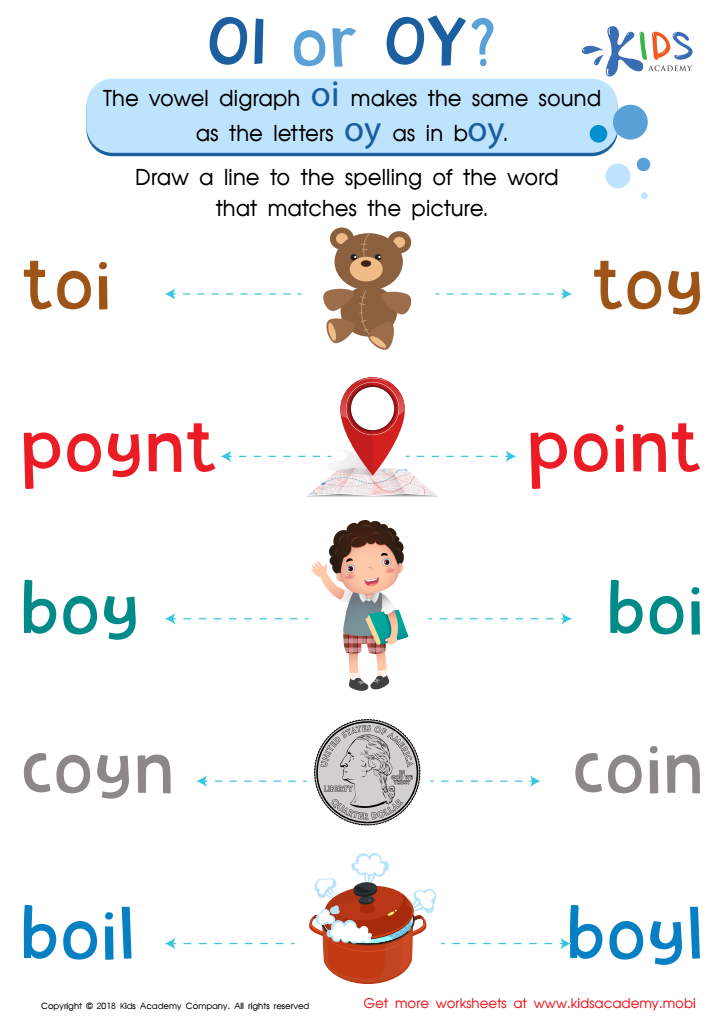

Reading: OI and OY Worksheet


Reading: EA as in Bread Worksheet
Vocabulary expansion, especially in the context of normal Grade 2 vowel blends, is crucial for developing strong literacy skills in young learners. At this age, children are transitioning from learning to read to reading to learn, making vocabulary acquisition more important than ever.
Understanding vowel blends—combinations of vowel sounds with consonants—helps children decode new words and enhances their reading fluency. When parents and teachers prioritize vocabulary expansion, they provide students with the tools needed to comprehend texts, express themselves, and engage in thoughtful discussions.
A rich vocabulary fosters confidence in children, enabling them to articulate their ideas, emotions, and experiences more effectively. Additionally, exposure to a diverse range of words creates a deeper understanding of language, which is essential for their overall academic success.
Developing solid vocabulary skills at this early stage sets the foundation for future learning—impacting everything from reading comprehension to writing proficiency across subjects. As children encounter more complex texts in later grades, a broad vocabulary will allow them to navigate challenges with greater ease and creativity.
Ultimately, when parents and teachers work together to support vocabulary expansion, they empower children to become lifelong learners and effective communicators.
 Assign to My Students
Assign to My Students








